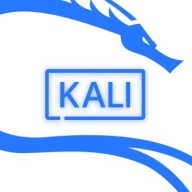

Oracle Linux focuses on enterprise environments while Kali Linux targets cybersecurity professionals. Oracle Linux has the upper hand in stability and enterprise support, whereas Kali Linux excels in specialized security tools.
Features: Oracle Linux users value its compatibility with enterprise applications, robust support infrastructure, and stability. Kali Linux users focus on its extensive suite of penetration testing tools, pre-configured security environments, and specialized security utilities.
Room for Improvement: Oracle Linux needs better desktop performance, more frequent updates, and improved user experience on desktops. Kali Linux requires user-friendly documentation, a more intuitive interface, and streamlined tools for novices.
Ease of Deployment and Customer Service: Oracle Linux is straightforward to deploy in enterprise settings with strong professional support. Kali Linux deployment is simple but requires cybersecurity expertise, and support is community-driven.
Pricing and ROI: Oracle Linux has enterprise licensing costs and provides ROI through long-term stability and support. Kali Linux is open-source with no setup costs, offering high ROI for cybersecurity tasks.
Integrating Kali Linux with DevOps tools has resulted in reduced operational costs due to automated test cases, making it a worthwhile investment with significant returns by decreasing the attack surface area and the frequency of attack incidents.
I have saved time by avoiding the lag I sometimes face on the TryHackMe in-built machine, and I have learned more efficiently.
Everything from Oracle tools to applications is well integrated within Oracle Linux.
Our team is comfortable using Oracle Linux as it integrates well with Oracle tools, making everything work seamlessly.
In terms of outcomes or benefits I've seen over the last year, we have more than 30 servers, and we only need to reboot one server while all other servers continue working fine, resulting in very low downtime, which is very helpful.
Not all support engineers at Oracle are the same, so sometimes I experience good support that resolves issues quickly, while other times, it loops.
Oracle's technical support is excellent.
It is not as helpful or friendly as their application support.
It handles device performance well, automatically managing any issues that arise.
Oracle should make the process faster, as we sometimes have to use a previous processor model to ensure compatibility.
New processor models sometimes lack immediate compatibility with Oracle Linux, requiring the use of previous models until support is available.
Testing determines stability, as continuous Linux use and installations reveal more bugs.
Oracle Linux is very stable.
Our environment is locally deployed, and there are no performance issues or latency problems.
If real-time customized port scanning can be added, for example, instead of a default port such as 8080 or 443, if we can use a customized port such as 9876, that capability would be great.
Making Kali Linux more customizable would allow users to personalize it to their style.
Enhancing user-friendliness through more GUI-based tools and better integration could be beneficial.
Having a user interface would make tasks easier, saving time by avoiding the need to remember command-line instructions.
There are significant limitations as we are not able to customize the system, and we are forced to use standard features which are not suitable for our business.
Oracle Linux's outage management can be improved to better handle outages.
Kali Linux is free software, an operating system that's available to download without any cost or licensing fees.
My experience with pricing, setup costs, and licensing for Kali Linux has been positive, as it operates under an open-source model.
While ERP might be expensive, Oracle Linux and KVMs are not on the higher side.
The cost of Microsoft OS is pretty high, and switching to Oracle Linux, which is free, reduced our costs by about 20% to 25%.
Oracle Linux is affordable.
Kali Linux has positively impacted my organization by improving efficiency in penetration testing; its open-source nature permits extensive customization and inclusion of numerous comprehensive pre-installed tools, contributing to a secure network environment with effective monitoring of network applications.
Kali Linux has the capability of real-time data scanning for vulnerability assessment for backend services.
The overall focus on security in Kali Linux is what I find most useful.
Since it's from the same vendor as Oracle applications, it's easier to manage issues, making not just the solution cost-effective but also streamlined in management.
The updates are applied instantly once a CVE is identified, which makes it highly beneficial.
Oracle Linux provides fast updates, and the best aspect is that we can update our server without interrupting our service, which is very important for business continuity.
| Product | Market Share (%) |
|---|---|
| Oracle Linux | 7.4% |
| Kali Linux | 3.0% |
| Other | 89.6% |


| Company Size | Count |
|---|---|
| Small Business | 9 |
| Midsize Enterprise | 1 |
| Large Enterprise | 7 |
| Company Size | Count |
|---|---|
| Small Business | 40 |
| Midsize Enterprise | 17 |
| Large Enterprise | 70 |
Kali Linux is widely used by organizations for penetration testing, vulnerability assessments, web application security, network audits, ethical hacking, and open-source intelligence, providing extensive free features.
Organizations run Kali Linux in virtualized environments alongside other operating systems, employing tools for automated scans, malware identification, infrastructure testing, and application development or hosting. These users benefit from lower maintenance requirements and a smaller footprint. The toolset includes Nmap, SQLMap, Metasploit, and Hydra, ensuring effective security assessments. Its high scalability, performance, user-friendly interface, and extensive documentation enhance the platform's usability. Known for stability, flexibility, and virus resistance, Kali Linux supports web security, troubleshooting, and configuration tasks comprehensively.
What are the most important features of Kali Linux?
What benefits and ROI should users look for in reviews?
Kali Linux can support industries in improving security through stable and flexible environments that resist viruses and provide extensive documentation. Users employ it for web security, troubleshooting, and configuring capabilities. Necessary improvements include automation, user-friendliness, and integrating AI and blockchain. Enhancements in security features, faster installations, and better learning tools are also essential. Machine learning integration and non-enterprise user functionalities can address current limitations.
Oracle Linux is a stable, reliable, and scalable operating system primarily used for deploying and running Oracle databases. It is also suitable for various other functions, including managing operating systems and web servers, supporting traffic surveillance, and identity management.
Oracle Linux is highly valued for its stability, reliability, scalability, good technical support, and ease of use. It has helped organizations to achieve faster DNS queries, stable development environments, reduced vulnerability issues, good performance for Oracle applications, and improved ability to run test scenarios and parallel queries across massive databases.
Oracle Linux Features
Oracle Linux has many valuable key features. Some of the most useful ones include:
Oracle Linux Benefits
There are many benefits to implementing Oracle Linux. Some of the biggest advantages the solution offers include:
Reviews from Real Users
Oracle Linux stands out among its competitors for a number of reasons. Two major ones are its stability and scalability. PeerSpot users take note of the advantages of these features in their reviews:
One PeerSpot reviewer, an IT Manager, reports, “I find the virtualization the most valuable.” He adds, “Oracle Linux is the best Linux operating system that I have ever known. It is very stable and strong.”
An Enterprise Architect at a financial services firm writes of the solution, “You also don't have memory issues, especially when it is engineered with platforms like Exadata and Oracle Cluster. These give you the most throughput and performance.” He adds, “It is very scalable, especially on platforms like Oracle Cluster and Exadata.”
We monitor all Operating Systems (OS) for Business reviews to prevent fraudulent reviews and keep review quality high. We do not post reviews by company employees or direct competitors. We validate each review for authenticity via cross-reference with LinkedIn, and personal follow-up with the reviewer when necessary.